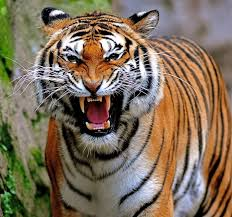L P Hartley’s The Go-Between projects the memories of a man in his
sixties, recollecting the memories of the summer of 1900 , when he turned thirteen at
Brandham Hall in Norfolk. It’s here that he comes “acutely aware of social inferiority”, as the prescence of ladies and viscounts come to mould his apprehension for where he will stand in social hierachy in adulthood.
L.P Hartley frequently refers to the physical composition of man in The Go Between through Leo’s admiration for the developed male form, as he reflectively wonders what it must feel like to be “master” of matured “limbs” and metaphorically compares his older acquaintance, Ted Burgess, to a “tiger.” L.P Hartley’s use of the “tiger” motif contrasts the earlier symbol of Leo’s “green suit”, symbolically reflecting the need for camouflage against fully-fledged masculine men surpass his position is society. Thus, L.P Hartley creates animalistic, wilderness imagery to highlight masculinity as a physical characteristic that enables men to hold a “tiger” like control over young boys who feel the need to hide their trepidations, in the fear of ridicule for their lack of masculinity. Leo reflects how the stockings he wore could not protect his leg from “scratches”, relating to sharp claws of the “tiger.” Thus, showing how Ted’s physicality has entrenched Leo with an overwhelming feeling of vulnerability and victimisation, as a pubescent boy who has no way of knowing what the future entails.
Fast-forward fifty one years since L P Hartley published the novel in 1952, and youth umployment is at an all time high. The added stress of rises in housing prices, university fees and lack of experience, means that Leo can perhaps serve as an on-going figure for immature apprehension. Although L P Hartley’s iconic opening line “The past is a foreign country: they do things differently there” rings true in many way such as vast technological advances, perhaps the feelings we harbor in response to societal structure have remained, and is only intensifying.


